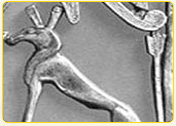Gods - Amon
Anath
Goddess of Semitic origin, probably introduced by the Hyksos. She was a war goddess, daughter of Re and a consort of Seth. In representations, she had a shield, battle-axe and a tall crown encircled by feathers.
Antaios
Was at first two falcons, but during the New Kingdom, they were combined to one deity. Antaios was then equated with Horus.
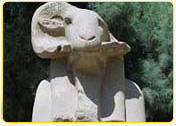
Gods - Apis
Astarte
Goddess of love and war. Introduced from the Levant into Egypt in the 18th Dynasty. She was often equated with Sekhmet or Hathor, and considered to be a consort of Seth.
Aten
God which developed from being just a designation of the sun. Is sometimes presented as a solar disk with rays ending in hans. Aten was worshipped at Akhet-Aten (today Tell el-Amarna), and considered to be omnipresent and have a paternal role to the king.
Atum
Creator god, taking both the form of a human being and a serpent. Atum was the sepreme god in Heliopolis, later he merged with Re to form Re-Atum.
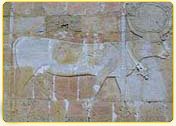
Gods - Bes
Dedun
God in human form worshipped at Philae, where he was called Arsnubis. Dedun came from Nubia, and is the dispenser of incense.
Edjo or Uto
Goddess in the shape of a serpent, or a papyrus plant. She was according to different points of view, either the mistress or the protector of the king. Edjo belonged to northern Egypt.
Geb
Important earth-god (a function often filled by goddesses), that was the begetter of Osiris and his brothers and sisters. Geb was also a protector of the dead. He was always presented in a human form.
Hah
God representing infinity, often represented as sky-bearer.
Harsaphes
God of Herakleopolis, represented with ram’s head. Harsaphes was eventually assimilated with Osiris and Re.
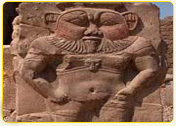
Gods - Isis
Kadesh
Love goddess, usually represented naked. Kadesh was introduced from the Middle East. Together with Min and Resheph she formed a triad.
Khnum
Primordial creator-god who created human beings on a potter’s wheel, as well as the donor of the Nile waters. Khnum was represented in the form of a human with a ram’s head. Khnum is clearly the most important of the gods presented in this list, and was the main god at Hypselis, Esna, Antinoë and Elephantine.
At Antinoë his consort was Heket, the goddess of birth. At Esna, it was Neith, the war goddess.
Khons
Moon god represented as a human with a moon disk. Was one of the triad at Thebes, together with Amon and Mut. The main temple at Karnak was dedicated to Khons.
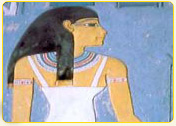
Gods - Serapis
Satis
Goddess worshipped on Elephantine, and wife of Khnum. She was the dispenser of cool water coming from Elephantine. She was depicted wearing a crown and two gazelle horns. At a later stage she fused with Sothis.
Sekhmet
Mistress of war and diseases, usually represented with the head of a lion. She was hence closely connected to the other feline goddess, Bastet, but with a benevolent character. She was part of the triad of Memphis, together with Ptah and Nefertem.
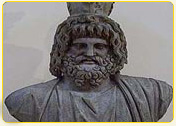
Gods - Seth
Shay
Not really a god, as much as an aspect — the lifespan given to each living being, together with its fate. But at Hypselis, Shay came to be the object of a cult, in association with Khnum.
Shed
God that kills dangerous animals and is in general helpful is referred to as “The Saviour”. Shed is represented as s youthful god, and often associated with Horus.
Shu
God of the air and bearer of heaven. In some contexts, Shu is even considered to be the sun.
Sia
Not really a god, but more a personification of qualities like creativeness of mind and speech, together with the quality of divine knowledge.
Thoueris
Hippopotamus goddess for fertility. Together with Bes, she protects working women.
Unut
In some contexts, demon of the underworld. Originally, she was goddess of Hermopolis, and represented as a hare.
Upwawet
God of war (as Assyut) or of the necropolis (at Abydos). Upawet was represented with the head of a jackal.
